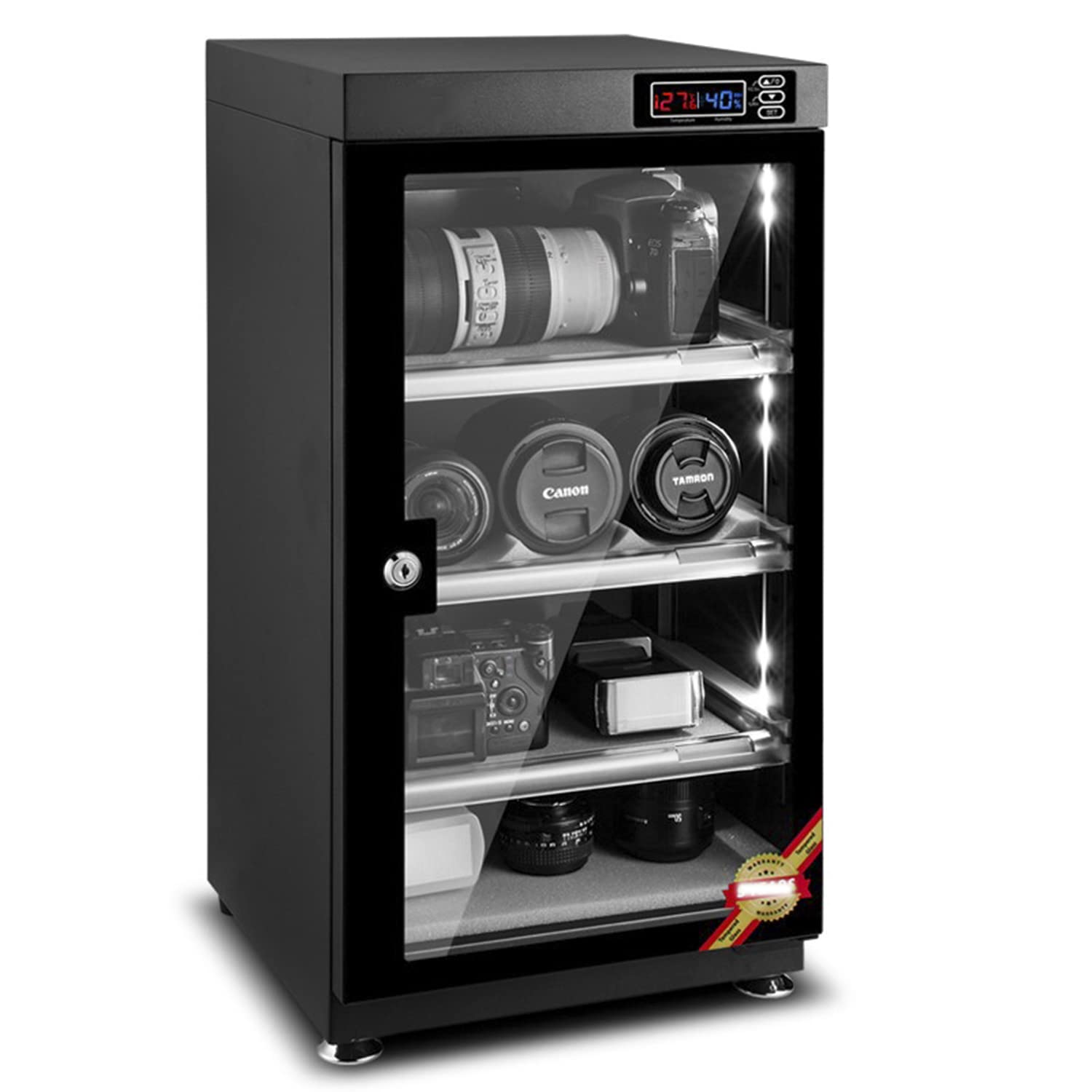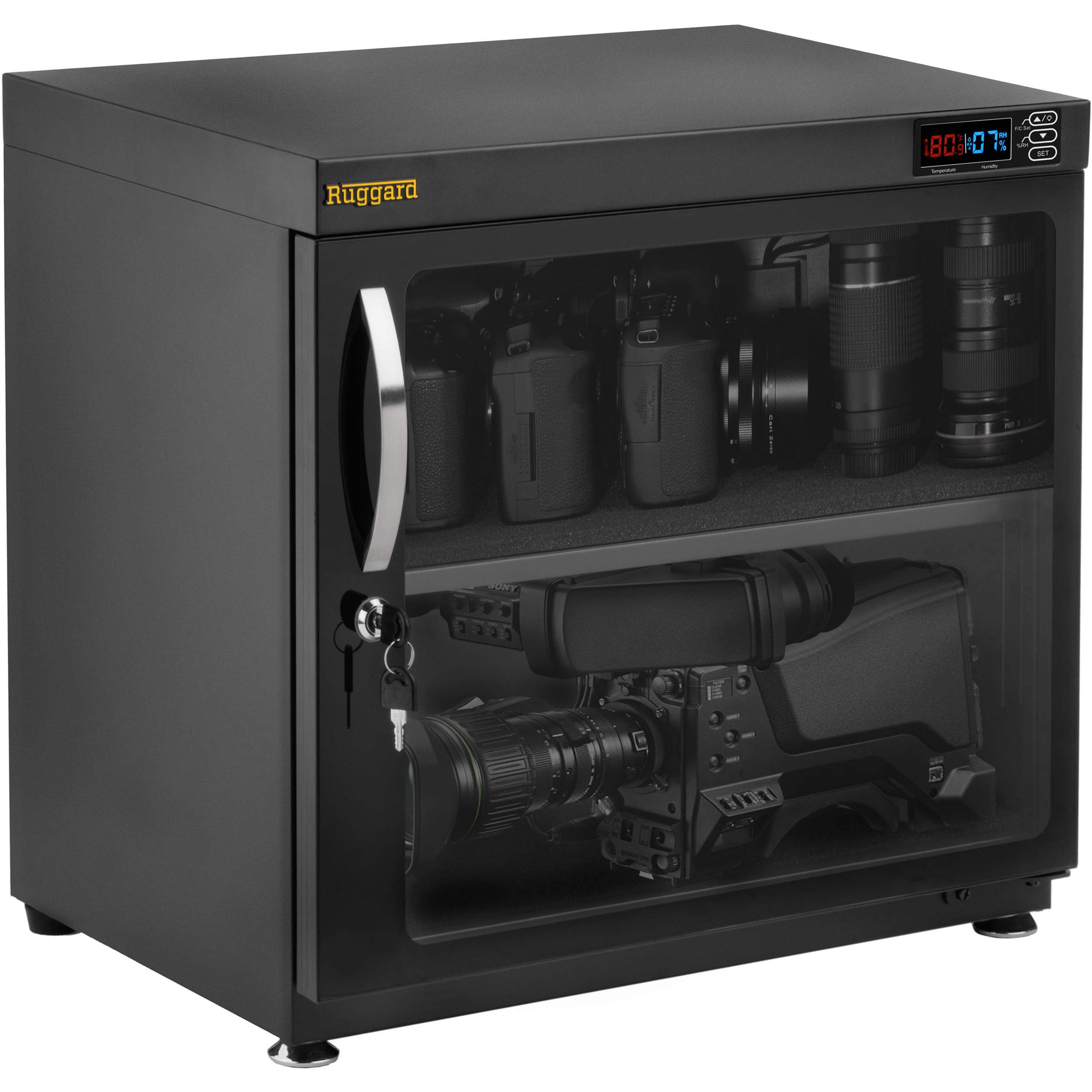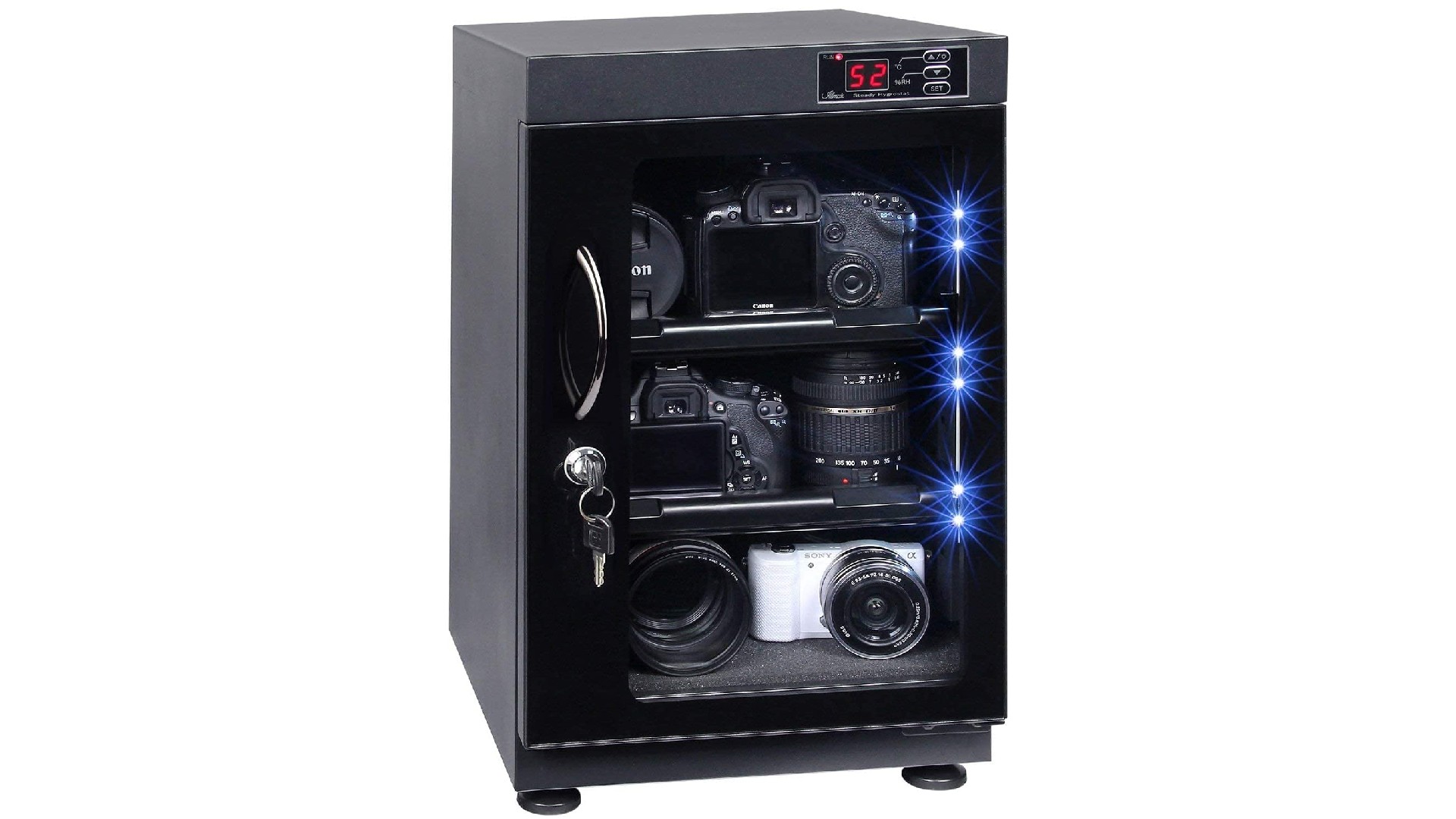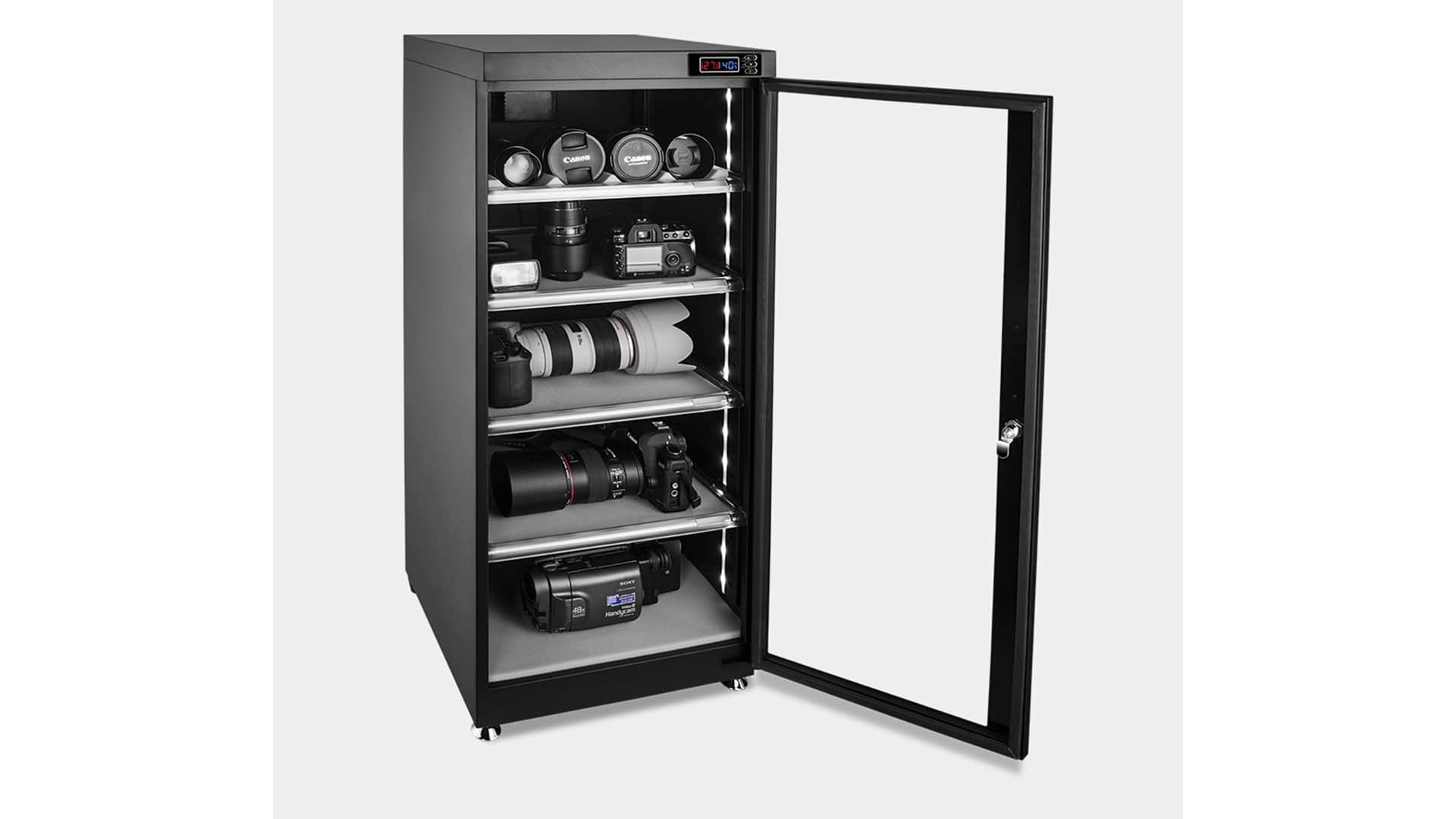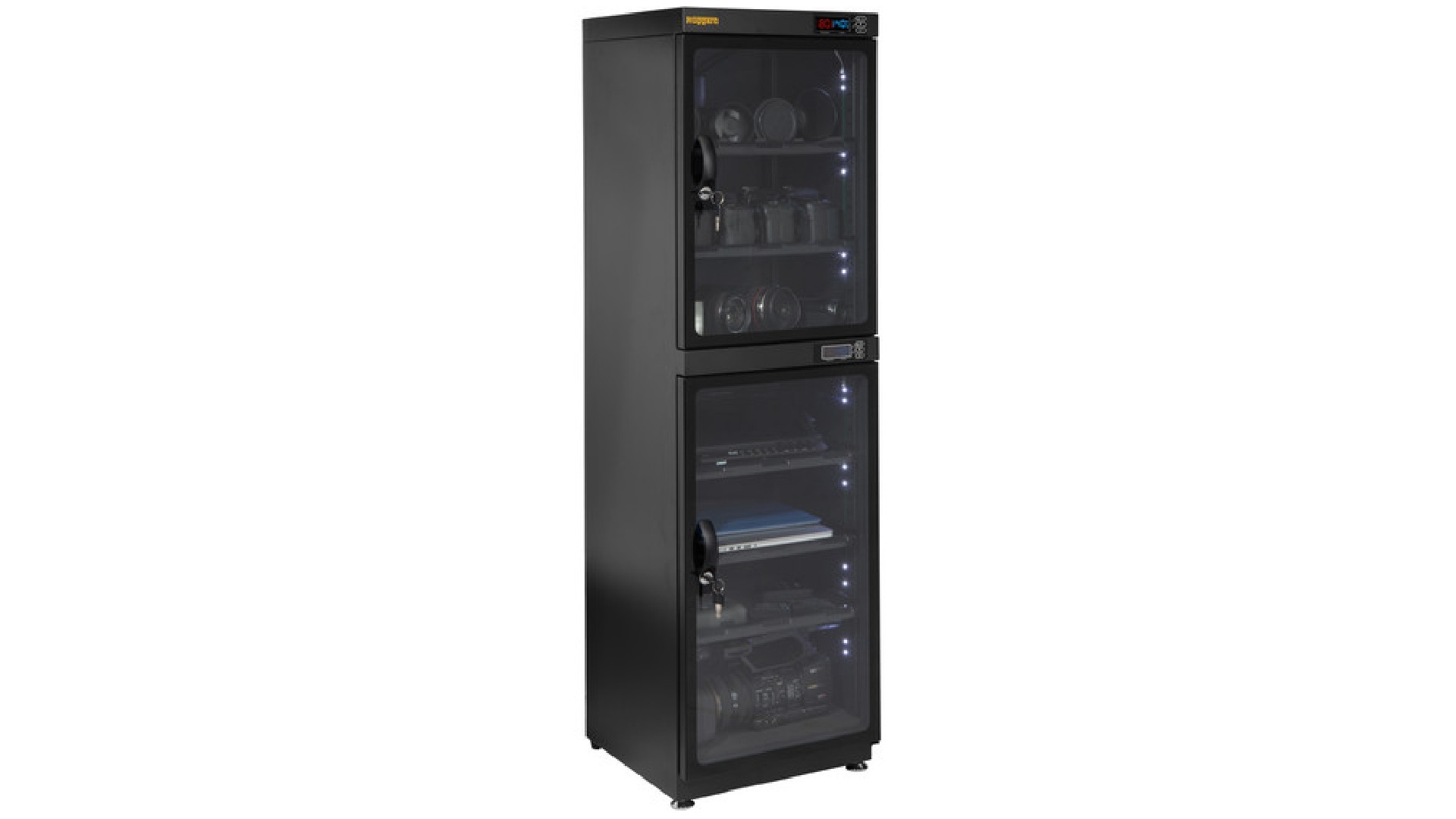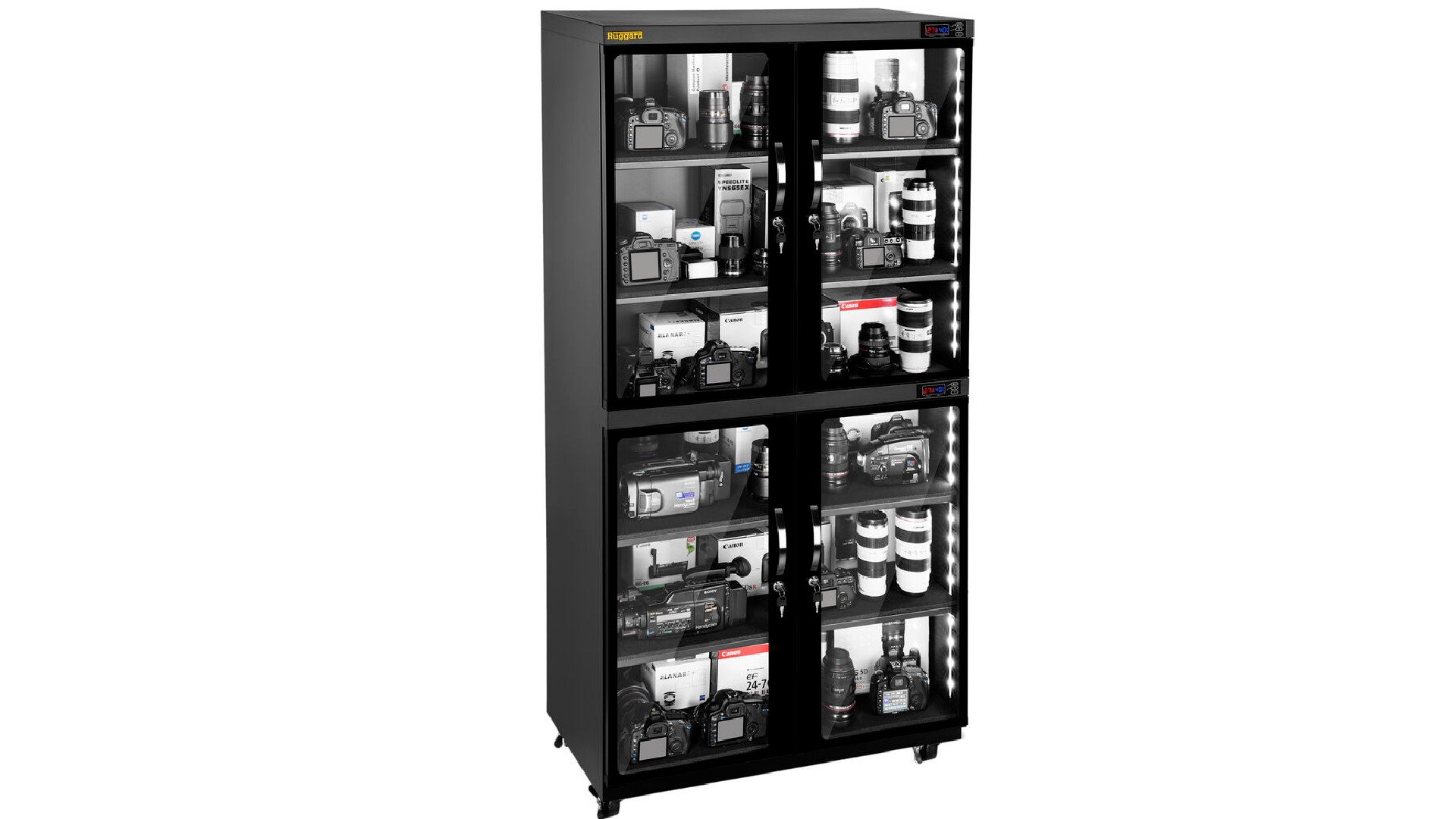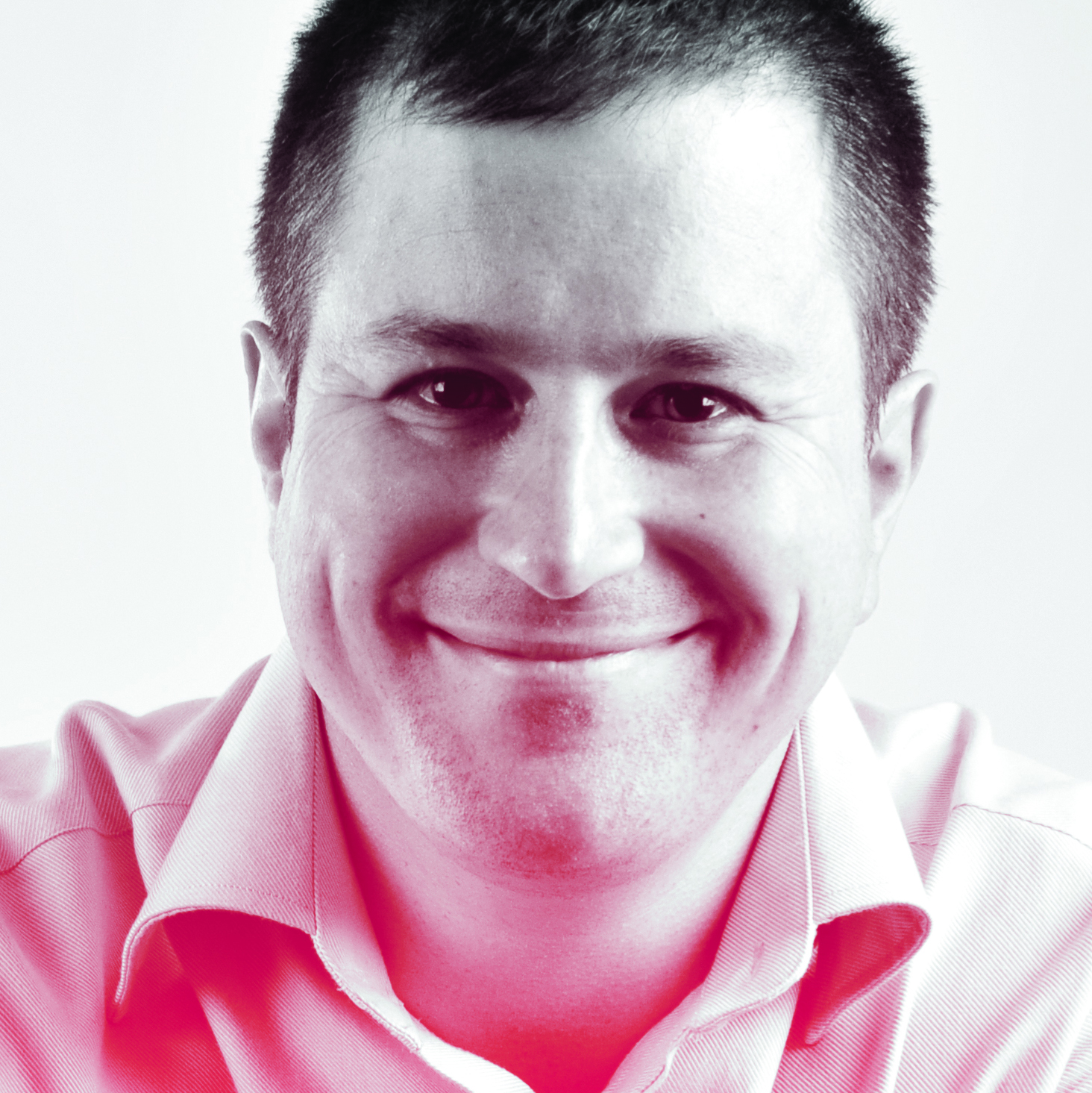Best dry cabinet for cameras in 2025: keep your kit safe in a climatically-controlled cupboard
Protect your valuable camera gear from humidity by using one of the best dry cabinet for cameras and lenses
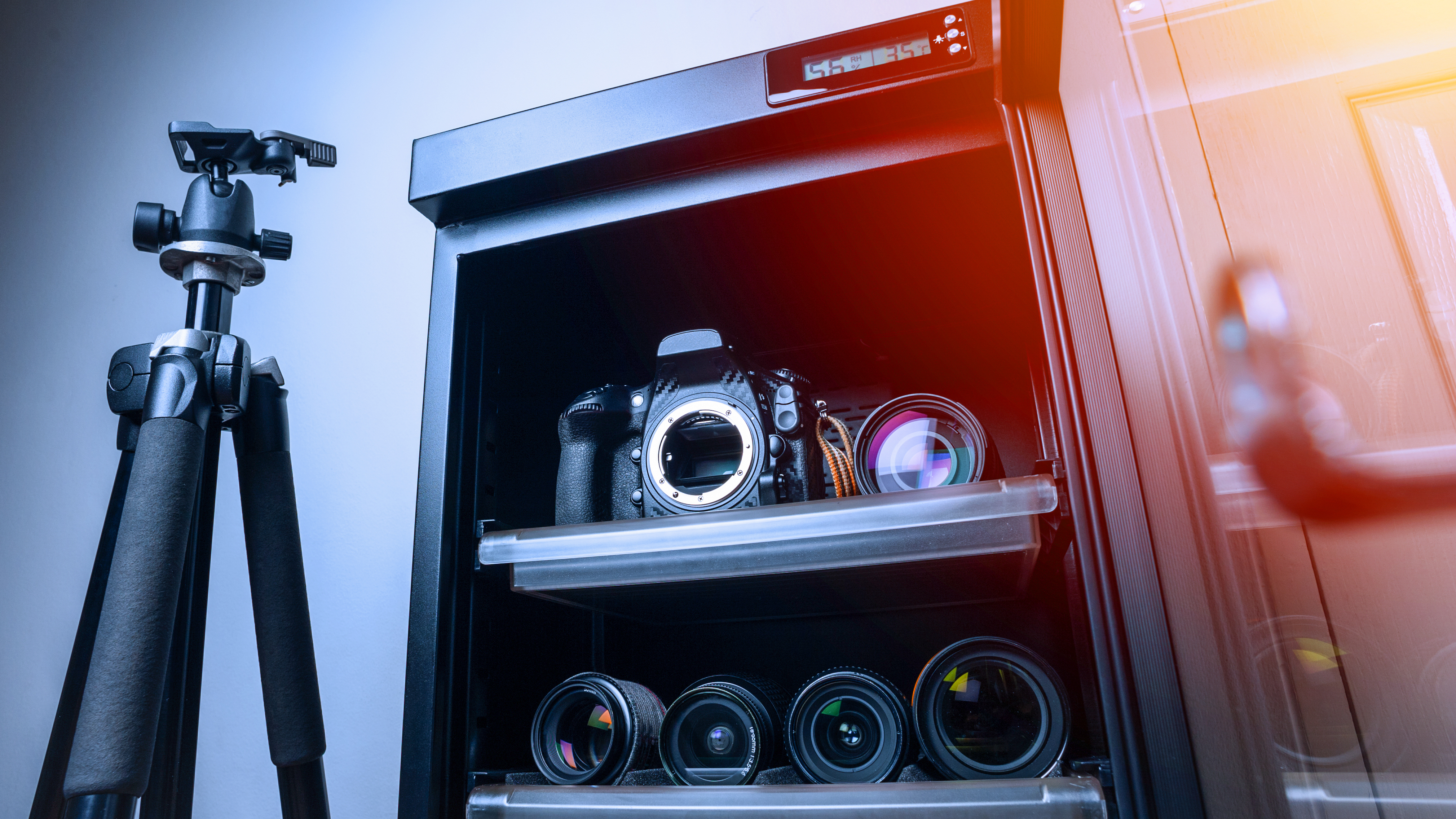
The best dry cabinet is an investment that can pay dividends for photographers and videographers. Essentially, these cabinets allow you to protect your precious equipment from the damaging effects of humidity and moisture by sealing them in a carefully controlled environment, potentially saving you thousands in repairs or replacements.
These cabinets are most commonly used in humid, tropical climates. However, as fungus can grow easily inside cameras and lenses, these dry storage units can be a great investment when storing anywhere there is a risk of your kit getting damp.
Several different manufacturers make dry cabinets and come in wildly differing sizes. The more kit you want to protect, the bigger the unit you need - our guide covers a range of capacities from a modest 18 liters to a giant 600 liters.
It's worth noting that they require power for humidity control, so that's something to factor in when planning where to put yours. Most are also lockable with keys, providing an extra layer of security for your camera kit.
To help you find the right model, we list the best dry cabinets for cameras on the market today. We'll explain what each has to offer, and give you the facts and figures to choose between them.
Our top picks

Best for most
If you don't have a lot of kit, here's the best dry cabinet for you. It has a capacity of just 18 litres, which is plenty for just a camera and a couple of lenses.
Read more
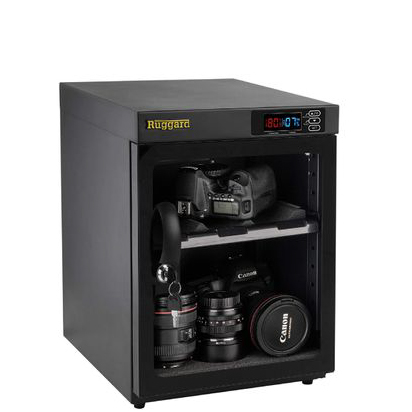
Best 30-liter
If you have more than just one camera and lens – let's say one DSLR and two or three telephoto lenses – then this is the dry cabinet for you, with a capacity of 30 litres.
Read more
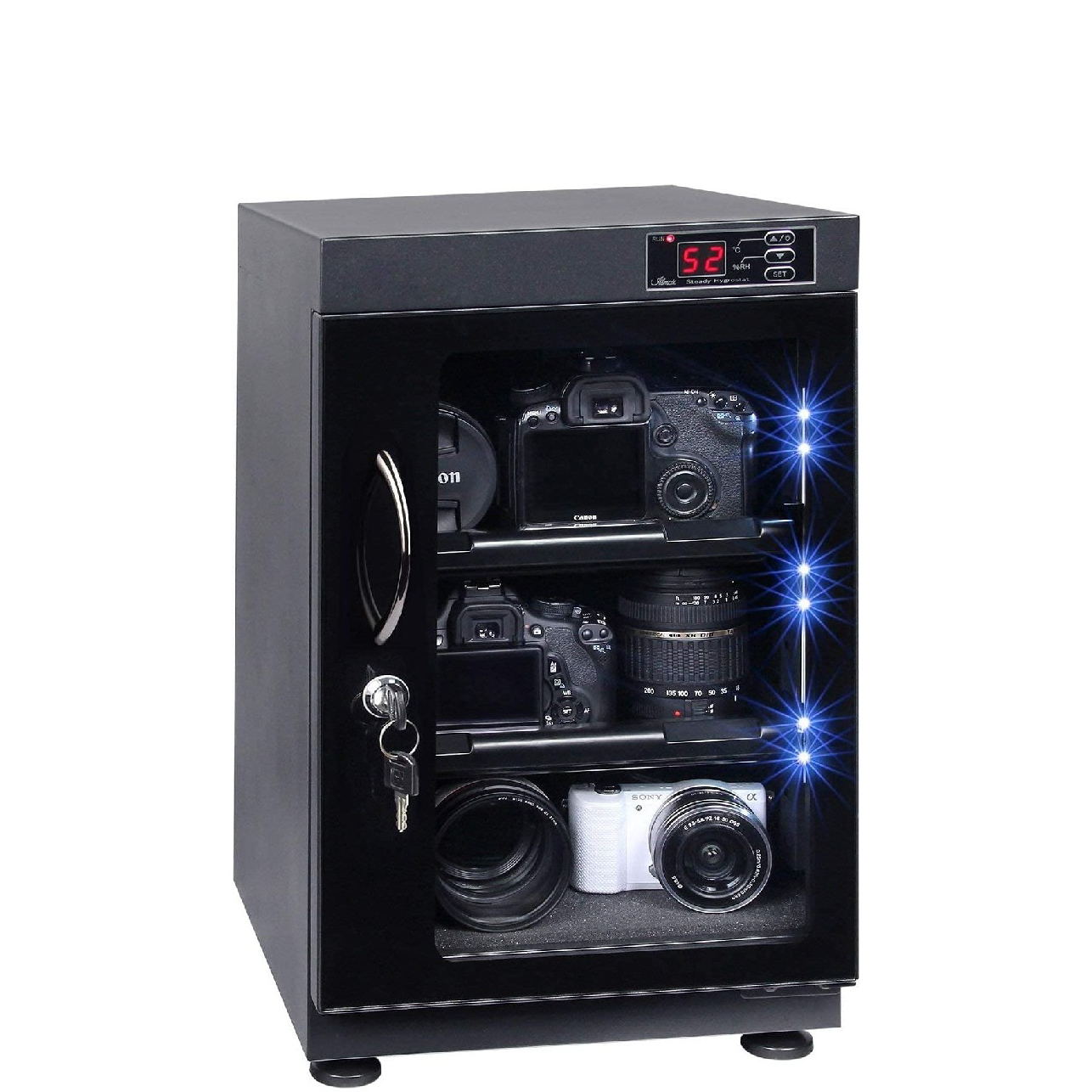
Best for 3+ cameras
If you have three or more cameras and lenses, you may find the T.A.P 38L Dry Cabinet is large enough to store all of them, at a reasonable price.
Read more
Our pick of the best dry cabinets for cameras and lenses
Why you can trust Digital Camera World
Best small
1. Ruggard Electronic Dry Cabinet 18L
Specifications
Reasons to buy
Reasons to avoid
Our first entry is the smallest on the list, with a capacity of just 18 litres. But for many people with just a camera and a standard lens to protect, that will be plenty. And it means you won't have to spend too much money, or take up too much space in your home or studio.
This dry cabinet protects your gear from fungus and corrosion by regulating the interior's relative humidity from 35-60%. It has a lockable, rubber-sealed glass door, with two keys, and a front plastic handle.
A large, dimmable LCD displays the ambient temperature (in a choice of Fahrenheit or Celsius), relative humidity, and other stats, while interior LED lights make it easy to find and grab your kit when you need it. Both the base and shelf are padded to help guard against scratches. It runs near-silent, and is dripless, so there's no need for a water tray.
Best 30 litre
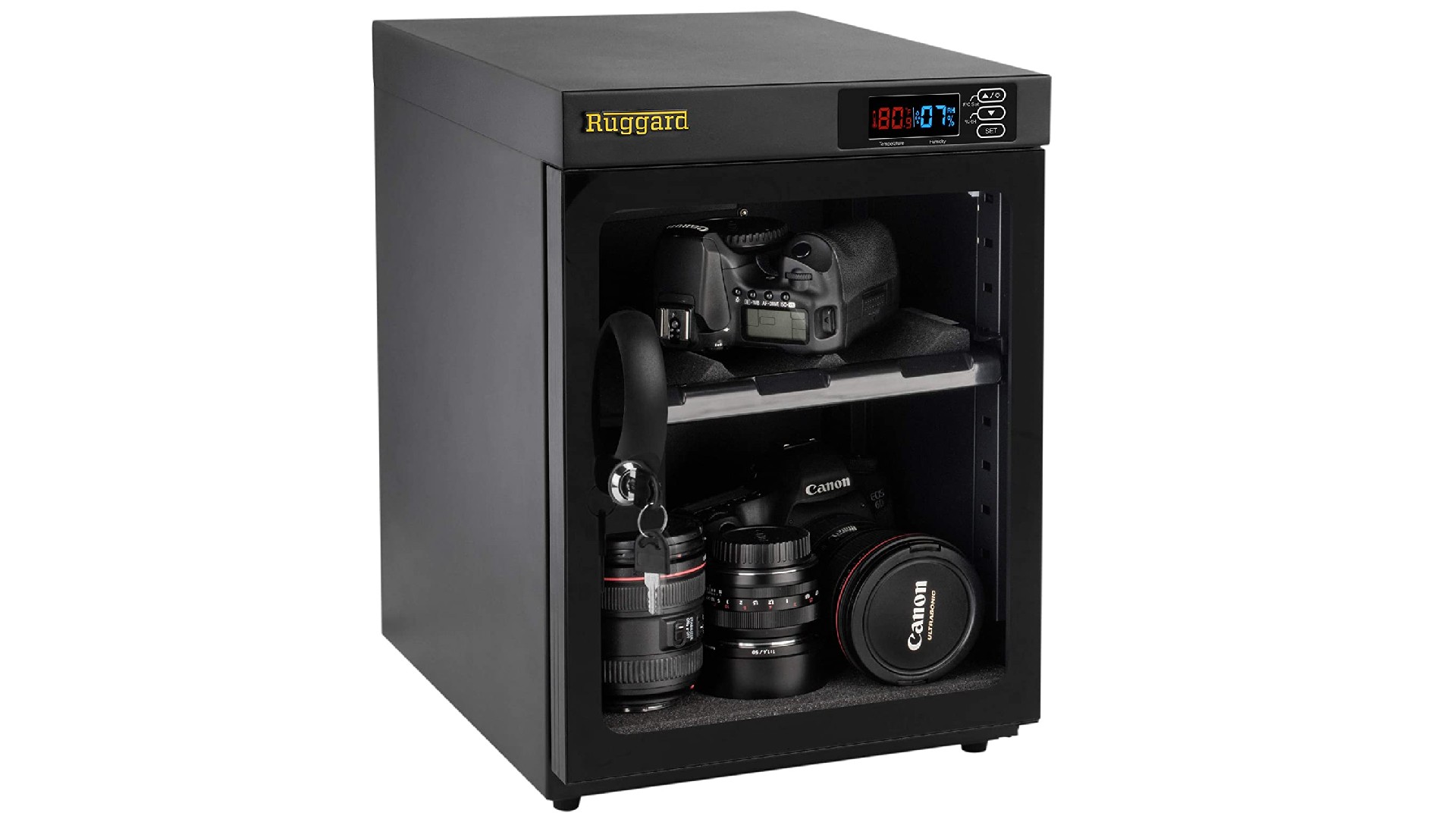
2. Ruggard Electronic Dry Cabinet 30L
Specifications
Reasons to buy
Reasons to avoid
If you have more than just one camera and lens – let's say one DSLR and two or three telephoto lenses – you'll want something a little bigger than the first entry on our list. Another dry cabinet from Ruggard, this has a larger capacity of 30 litres, and there's a padded shelf to help you organise things. Otherwise, you're getting the same controlled humidity range of 35%-60%, LCD displays, interior lights and near-silent running as the 18L version.
Best for 3 or more cameras
3. TAP 38L Dry Cabinet
Specifications
Reasons to buy
Reasons to avoid
If you have three or more cameras and lenses, you may find that (as the above photo suggests), the T.A.P 38L Dry Cabinet is large enough to store all of them. While you do so, the condensation drying system will keep it safe from humidity and degradation, and you can set a humidity range between 25% and 70%. The toughened glass door can be locked with a key. As you'd expect, there's an interior light and LED display. And it all comes in a quite a reasonable price.
Bear in mind that the T.A.P 38L Dry Cabinet is available in the US, but is currently a bit harder to find elsewhere.
Best 50 litre

4. Intbuying 50L
Specifications
Reasons to buy
Reasons to avoid
Taking a step up in size, this 50-litre capacity dry cabinet features four adjustable shelves for easy storage and retrieval. You can control the relative humidity level inside between 25% and 60%, in five per cent increments. If you don't have enough photography kit to completely fill it, the makers suggest you might also use it to store electrical components, precious metals, jewelry, stamps, old books, leather, antiques, and other valuables.
Best 70 litre
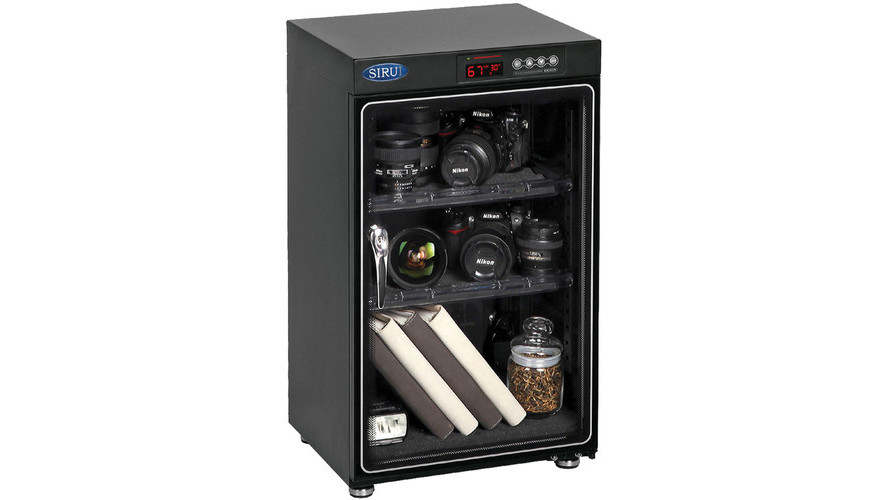
5. Sirui HC-70 Electronic Humidity Control Cabinet
Specifications
Reasons to buy
Reasons to avoid
This 70L cabinet by Sirui is a well-featured option, with all the functions and features you'd expect from a dry cabinet. Its automatic dehumidifying system keeps things safely dry, while the button control system and front LCD screen allow you to control and monitor the interior conditions. The exterior is constructed from welded 1.2mm-thick cold-rolled steel and the door from tempered glass, to ensure long-lasting protection. It's lockable with keys, and in the event of power loss, will maintain its humidity level for up to 24 hours.
Best 80 litre
6. Ruggard EDC-80L
Specifications
Reasons to buy
Reasons to avoid
If you have a larger-than-average camera or video camera, you may need something like this 80-litre dry cabinet to keep it safe. Its dimensions are plenty spacious, and the bottom of the cabinet has four rubber feet; two of which are leveling feet for installing on uneven surfaces.
As with its smaller Ruggard cousins, this cabinet has a lockable, rubber-sealed glass door, with two keys, and a front metal handle. There's a large, dimmable LCD display, interior LED lights make viewing and finding gear easier, and both the base and the adjustable steel shelf are padded to guard against scratches. Humidity control ranges from 35% to 60%.
Best 100 litre
7. PreAsion 100L
Specifications
Reasons to buy
Reasons to avoid
With a 100-litre capacity, this dry cabinet has five adjustable and removable shelves, making it a great choice for storing a large variety of equipment. As one example, its makers say it can hold a Canon 1D Mk IV, a Canon 7D + 24-60mm lens, a Canon 5D Mk III + 70-200mm lens, a Canon 60D + 18-135mm lens, and a Canon 40D + 70-200mm lens.
It has height-adjustable feet, and a touch-sensitive LED display. It's well-built, constructed from cold-roll steel sheets and a tempered glass door. You can control the relative humidity level in the range of 25% to 60%. And even if you have a continuous power outage for 24 hours, it still can continue to absorb moisture using the chemical moisture absorption replenishment function.
Best 180 litre
8. Ruggard 180LC Electronic Dry Cabinet
Specifications
Reasons to buy
Reasons to avoid
Need even more space? This 180-litre dry cabinet by Ruggard is staggeringly big, which means it'll take up lots of room in your home or studio, but you'll have loads of capacity to store all your stuff on its five adjustable shelves. Boasting dual humidity zones, the cabinet's fast-acting TE Cooling Wafer regulates the interior's relative humidity from 60 to 35%.
Best 600 litre
9. Ruggard EDC-600L-S
Specifications
Reasons to buy
Reasons to avoid
This cabinet's 600 litres would be overkill for even the most kit-laden individual photographer, but it's well worth considering if you're running a studio or are a camera collector.
Solidly constructed from steel and toughened glass, this is going to take up a lot of space, and you'll need two or three people to move it upstairs; although it's on casters so moving it within a room is not so tricky. In return, you get enough space to house a considerable collection of cameras, lenses, and other kit, at a humidity level between 35 and 60%, controlled by a touchscreen display.
FAQs
What is a dry cabinet?
A dry cabinet, aka dry box, is a specialized storage unit designed to maintain a low level of humidity to protect moisture-sensitive items such as cameras, electronic components, optical instruments, and valuable artifacts.
How does a dry cabinet protect camera equipment?
A dry cabinet uses a dehumidifying system to maintain a controlled level of humidity inside the cabinet. This is important because high levels of humidity can cause mold, rust, and corrosion to form on parts of your photography gear, which can lead to malfunction and breakdown. In addition, moisture can cause fungus to grow inside the optical elements of cameras and lenses, which can damage its functionality – and substantially reduce their value. These climatically-controlled cupboards are also good for protecting your kit from other environmental factors such as dust and dirt.
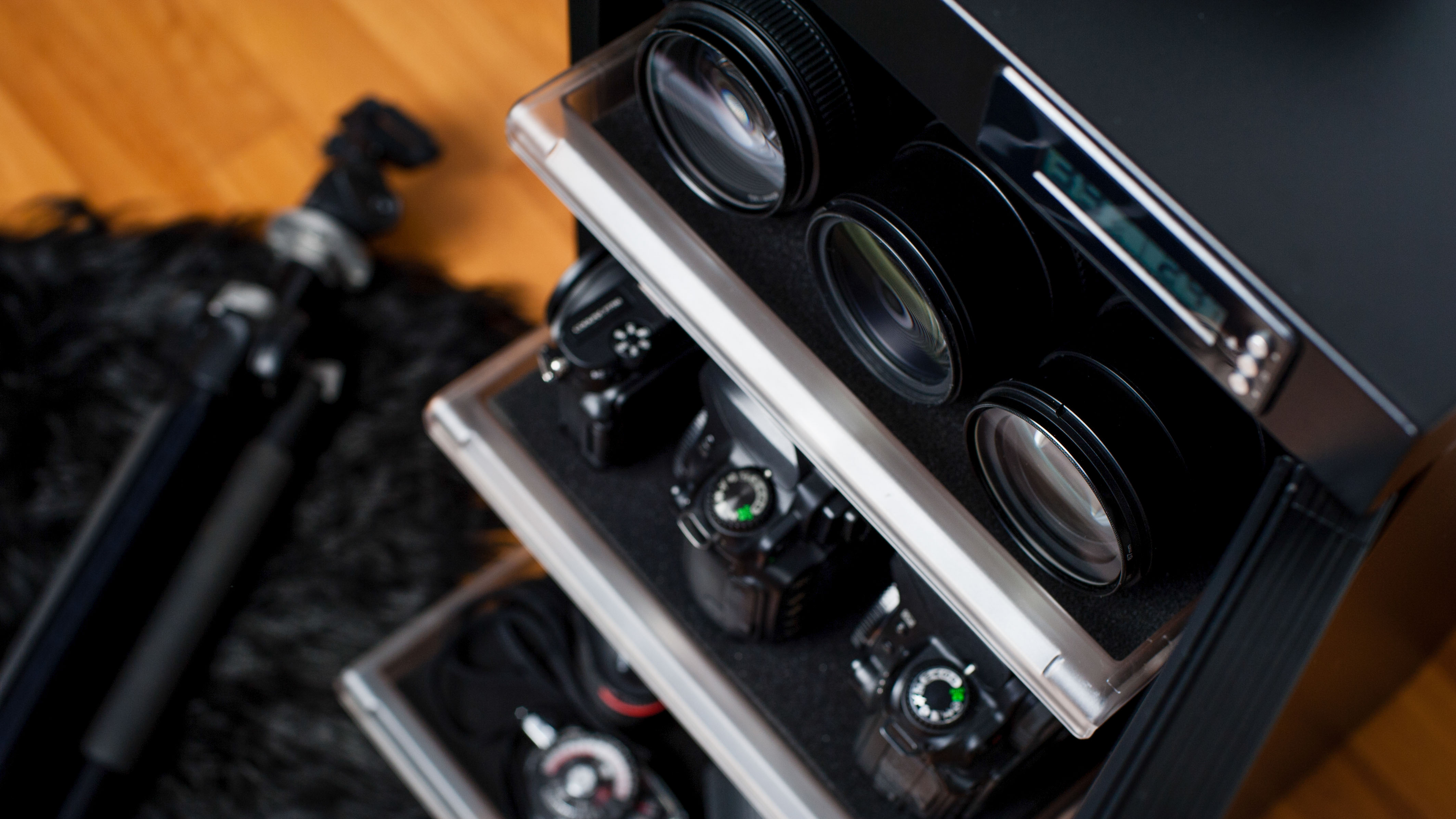
In which parts of the world do you need a dry cabinet?
Dry cabinets are most commonly used in areas with high humidity, such as tropical regions. But in truth, anywhere you are in the world, they can protect your valuable and delicate equipment from harm. And considering how unpredictable global weather is becoming as a result of climate change, there are few places that are guaranteed safe from humidity or damp.
This electronically-controlled method of storage allows you to regulate the relative humidity level and the temperature inside. The optimum humidity level is usually considered to be around 40-50% (and being too low, as well as too high, can be harmful, so ensure it is above 30%).
How to choose a dry cabinet
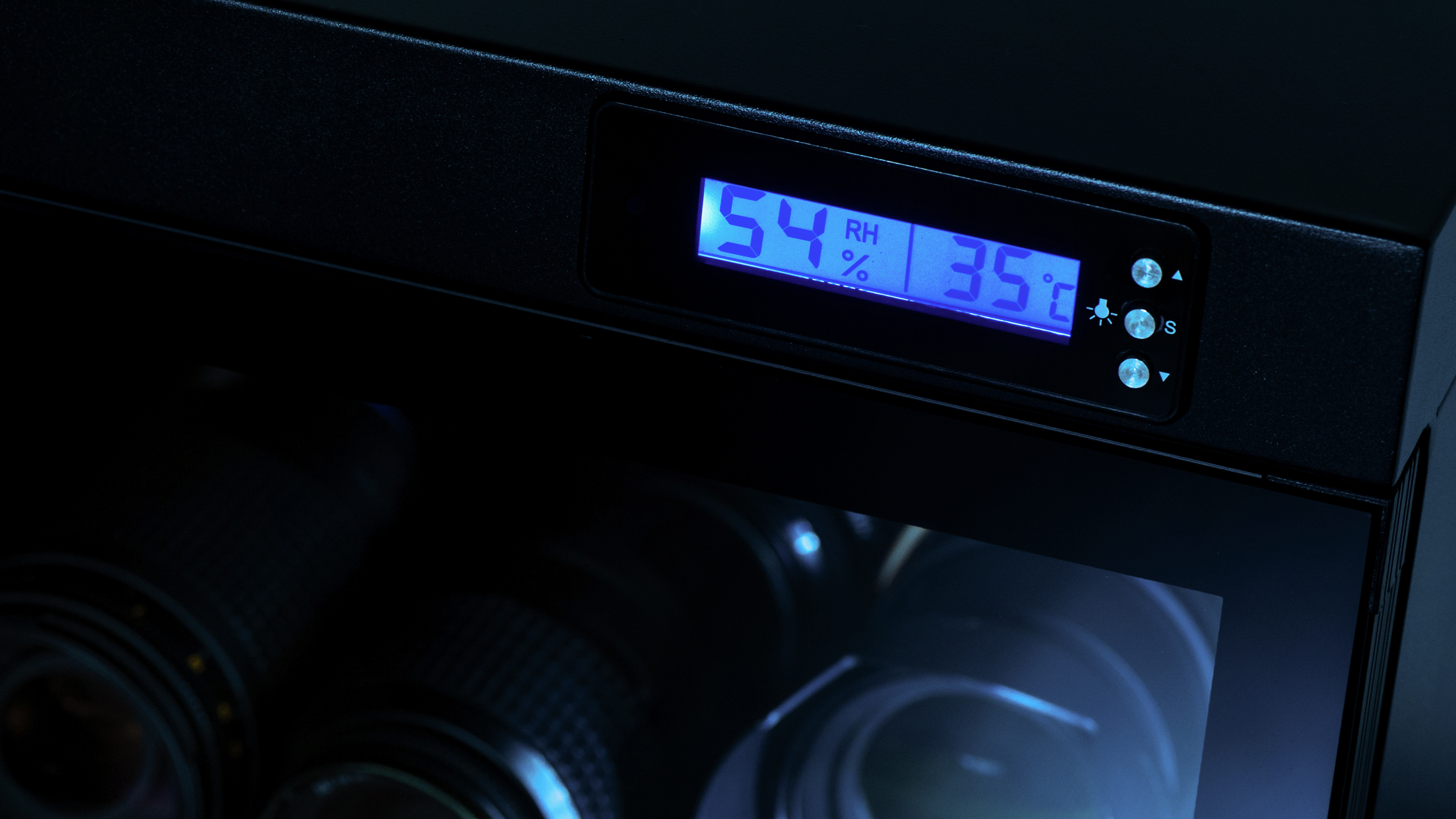
When selecting a dry cabinet, there are several factors to consider. Most importantly, think about how many items you plan to store, and what size cabinet you'll need. It's also essential to choose a cabinet with precise humidity monitoring and control features. Look for models with digital displays and user-adjustable settings for optimal customization. Additionally, consider the cabinet's build quality, ensuring it's durable and airtight to prevent moisture ingress.
How we test dry cabinets
When we test dry cabinets, we verify the cabinet's airtightness by conducting leakage tests to confirm that outside moisture cannot penetrate the enclosure. We assess the humidity control system's performance by subjecting the cabinet to varying humidity levels and monitoring its ability to maintain a stable environment. We also evaluate the accuracy of humidity sensors and the responsiveness of the control mechanisms.
Other options for protecting your kit
The best camera sensor cleaners
Best underwater housings for cameras and phones
Compare prices
The best camera deals, reviews, product advice, and unmissable photography news, direct to your inbox!
Tom May is a freelance writer and editor specializing in art, photography, design and travel. He has been editor of Professional Photography magazine, associate editor at Creative Bloq, and deputy editor at net magazine. He has also worked for a wide range of mainstream titles including The Sun, Radio Times, NME, T3, Heat, Company and Bella.
